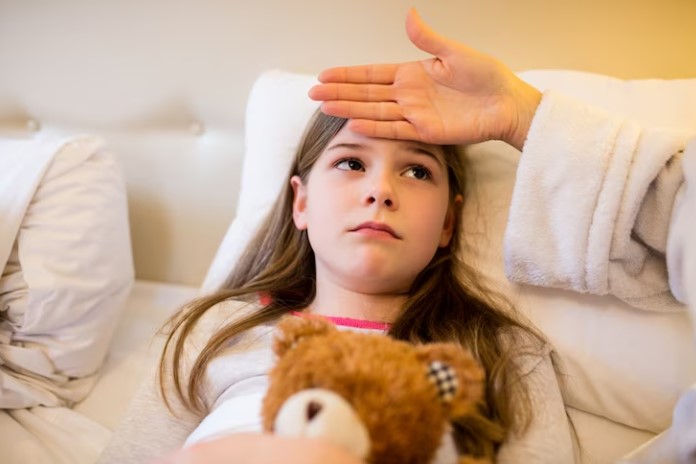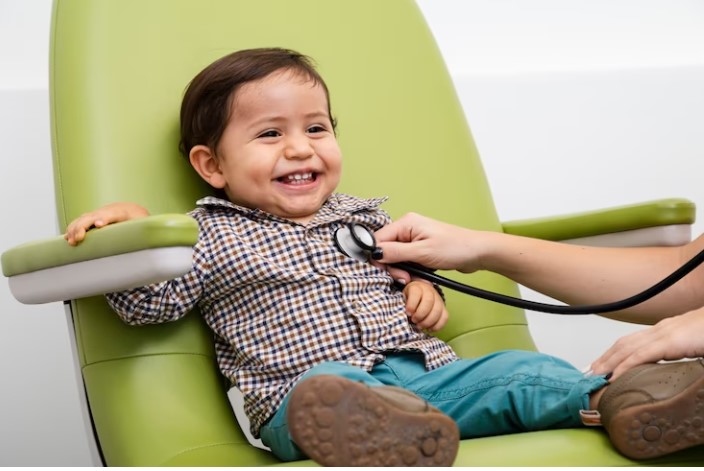As parents and caregivers, it’s important to understand common pediatric diseases and how to care for children who are affected by them. In this article, we will provide a comprehensive guide to common pediatric diseases, including their symptoms, causes, treatments, and prevention strategies.
Common Pediatric Diseases
1. Common Cold
The common cold is a viral infection that affects the upper respiratory tract. Symptoms include coughing, sneezing, runny nose, sore throat, and fever. The common cold is spread through contact with respiratory secretions from infected individuals.
2. Influenza
Influenza, also known as the flu, is a viral infection that can cause symptoms such as fever, coughing, sore throat, body aches, and fatigue. Influenza is spread through contact with respiratory secretions from infected individuals.
3. Asthma
Asthma is a chronic respiratory condition that causes inflammation and narrowing of the airways, making it difficult to breathe. Symptoms include wheezing, coughing, chest tightness, and shortness of breath. Asthma is often triggered by allergies, respiratory infections, or exposure to irritants such as smoke or pollution.
4. Strep Throat
Strep throat is a bacterial infection that causes inflammation and swelling of the throat and tonsils. Symptoms include sore throat, fever, headache, and swollen lymph nodes. Strep throat is spread through contact with respiratory secretions from infected individuals.
5. Gastroenteritis
Gastroenteritis, also known as the stomach flu, is a viral or bacterial infection that affects the digestive system. Symptoms include diarrhea, vomiting, stomach pain, and fever. Gastroenteritis is spread through contact with contaminated food or water, or through contact with infected individuals.
6. Ear Infection
An ear infection is a bacterial or viral infection of the middle ear. Symptoms include ear pain, fever, and difficulty hearing. Ear infections are often caused by respiratory infections, and are more common in young children due to the shape and size of their Eustachian tubes.

7. Conjunctivitis
Conjunctivitis, also known as pink eye, is an inflammation of the conjunctiva, the thin membrane that covers the white part of the eye. Symptoms include redness, itching, discharge, and tearing. Conjunctivitis is spread through contact with respiratory secretions or contaminated surfaces.
8. Chickenpox
Chickenpox is a viral infection that causes a rash of itchy blisters, along with fever, headache, and fatigue. Chickenpox is spread through contact with respiratory secretions or the fluid from the blisters of infected individuals.
9. Measles
Measles is a viral infection that causes a rash of red, flat spots, along with fever, coughing, and runny nose. Measles is spread through contact with respiratory secretions from infected individuals.
Causes and Treatments
Viral Infections
Many pediatric diseases are caused by viral infections. Treatment for viral infections often involves managing symptoms, such as fever, coughing, and runny nose, with over-the-counter medications, rest, and hydration. Some viral infections, such as influenza, can be treated with antiviral medications.
Bacterial Infections
Some pediatric diseases are caused by bacterial infections. Treatment for bacterial infections usually involves antibiotics to kill the bacteria. However, antibiotics are not effective against viral infections.
Chronic Conditions
Chronic conditions, such as asthma, may require ongoing treatment, such as medications and lifestyle changes, to manage symptoms and prevent complications.
Prevention
Preventing the spread of infectious diseases is an important aspect of pediatric healthcare. Strategies for preventing the spread of infectious diseases include:
- Vaccination: Vaccines are available for many pediatric diseases, including influenza, measles, and chickenpox.
- Hand washing: Regular hand washing with soap and water can help prevent the spread of infectious diseases.
- Avoiding close contact with sick individuals: Avoiding close contact with individuals who are sick can help prevent the spread of infectious diseases.
- Covering coughs and sneezes: Covering coughs and sneezes with a tissue or the elbow can help prevent the spread of respiratory infections.
Conclusion
In conclusion, understanding common pediatric diseases and how to care for children who are affected by them is important for parents and caregivers. Common pediatric diseases include the common cold, influenza, asthma, strep throat, gastroenteritis, ear infections, conjunctivitis, chickenpox, and measles. Causes and treatments vary depending on the disease, but may involve managing symptoms, taking antibiotics, or making lifestyle changes. Preventing the spread of infectious diseases is an important aspect of pediatric healthcare. As parents, caregivers, and healthcare providers, it’s important to be aware of common pediatric diseases and their symptoms, causes, treatments, and prevention strategies topromote the health and wellbeing of children. Early recognition and treatment of pediatric diseases can help prevent complications and improve outcomes. If your child is showing symptoms of a pediatric disease, it’s important to consult with your healthcare provider for proper diagnosis and treatment.
